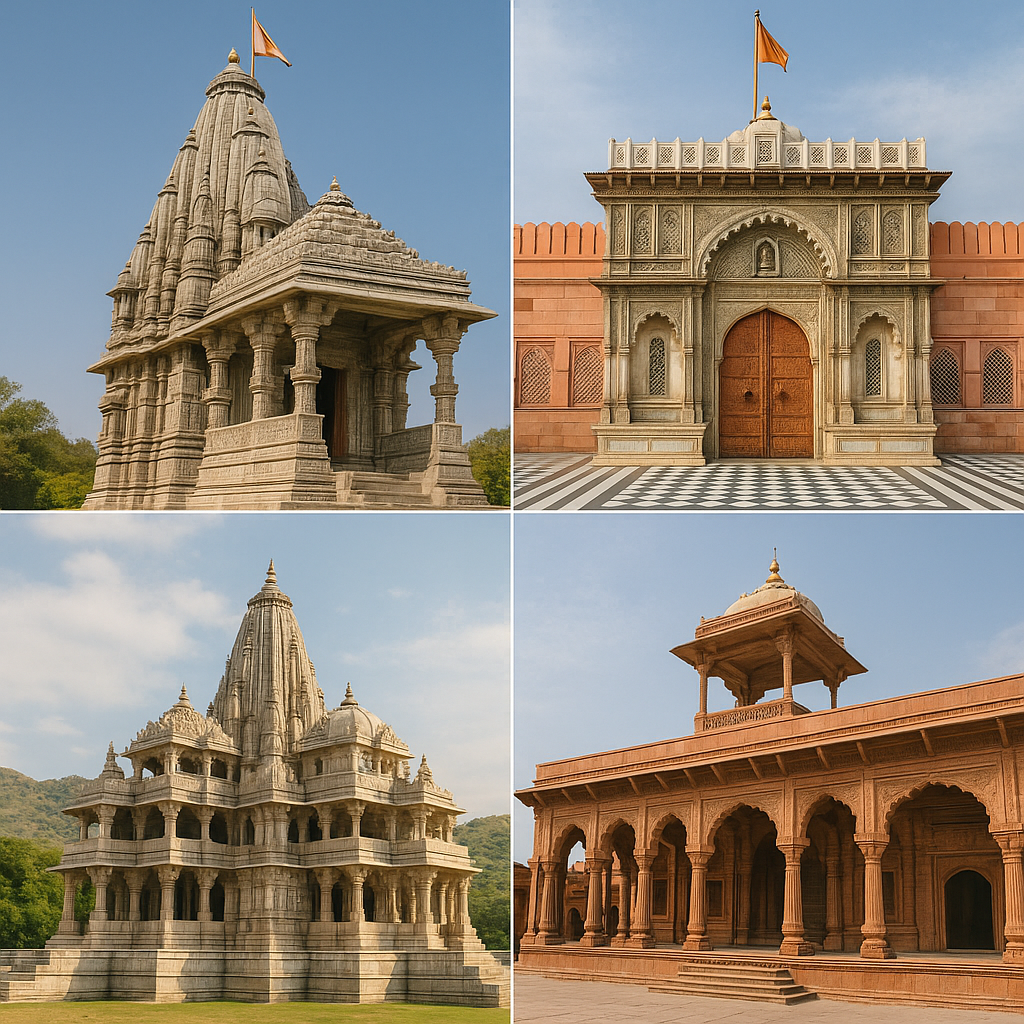
Table of Contents
Introduction
Rajasthan, the “Land of Kings,” is famous not only for its golden deserts, royal forts, and palace palaces but also for its rich spiritual heritage.
The Temples of Rajasthan in Rajasthan are an intriguing combination of religion, history, and architecture.
They are mute witnesses to centuries of faith and craftsmanship, attracting pilgrims and tourists from all over the globe.
From the ancient temples hewn out of marble with inimitable craftsmanship to distinctive places of pilgrimage chock-full of mythology, Rajasthan provides a divine odyssey through its spiritual and cultural spheres.
These temples are not just sites of worship—they are repositories of tradition, legends, and communal life that have defined the region’s character for centuries.
In this Hindu temple tour, we will travel to nine great temples of Rajasthan, each unique in its kind. Whether you are looking for spiritual comfort, architectural grandeur, or cultural richness, these temples symbolize the heart of Rajasthan.
1. Dilwara Temples, Mount Abu
The Dilwara Temples in Mount Abu are among the most magnificent temples of Rajasthan, celebrated worldwide for their breathtaking marble architecture, spiritual significance, and intricate carvings that stand as a testament to Jain devotion and artistry.
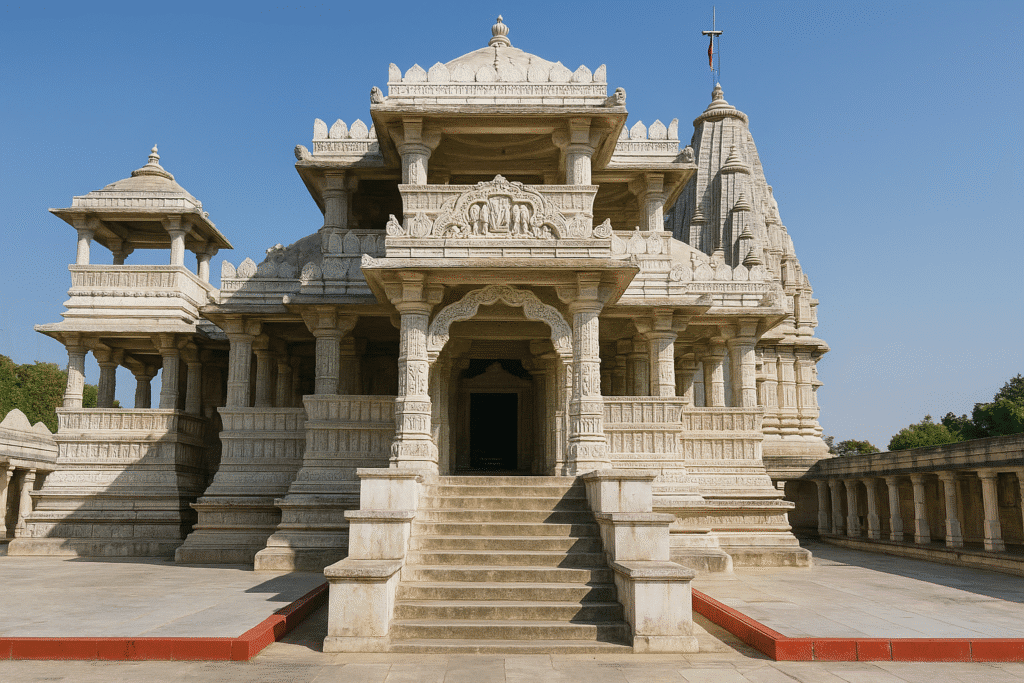
Constructed between the 11th and 13th centuries, they are famous for their beautiful marble carvings and precision detailing which render travelers speechless.
Historical Background
The Dilwara Temples were constructed between the 11th and 13th centuries CE during the reign of the Chaulukya (Solanki) dynasty.
These temples were built under the patronage of Jain ministers and wealthy merchants, who wanted to create sacred shrines that reflected both their devotion and the highest level of craftsmanship.
Over the centuries, these temples have been carefully preserved, maintaining their glory as one of the most important pilgrimage sites for Jains across the world.
Legends and Origins
Commissioned by Jain ministers of Solanki rulers of Gujarat, these ancient temples were built as an epitome of piety and charity.
According to legend, laborers were rewarded in silver equivalent to the weight of marble dust that they cut—a reflection of the premium laid on art and devotion.
Architectural Grandeur
There are five principal temples, each for a Jain Tirthankara. The Vimal Vasahi, which is devoted to Lord Rishabhanatha, boasts the beautiful Adinath idol and dome with delicately cut domes.
The Luna Vasahi temple, which is devoted to Neminatha, is renowned for the Rang Mandap, a hall lined with lavishly decorated pillars.
Each surface, from ceilings to doorway frames, is sculpted with deities, flowers, dancers, and heavenly beings.
While they have humble facades, the interiors of such temples unveil the height of divine art.
Spiritual Importance
For the Jains, Dilwara is one of the most sacred pilgrimages. The serene ambiance, along with marble work, gives it a place where meditation and reflection are made possible. For tourists, these temples serve as evidence that how the fervor can sculpt stone into living art.
2. Birla Mandir, Jaipur
The Birla Mandir in Jaipur, also known as the Laxmi Narayan Temple, is one of the most modern yet iconic temples of Rajasthan.
Built in 1988 by the prominent Birla industrial family, the temple is dedicated to Lord Vishnu (Narayan) and Goddess Laxmi, the deity of wealth and prosperity.
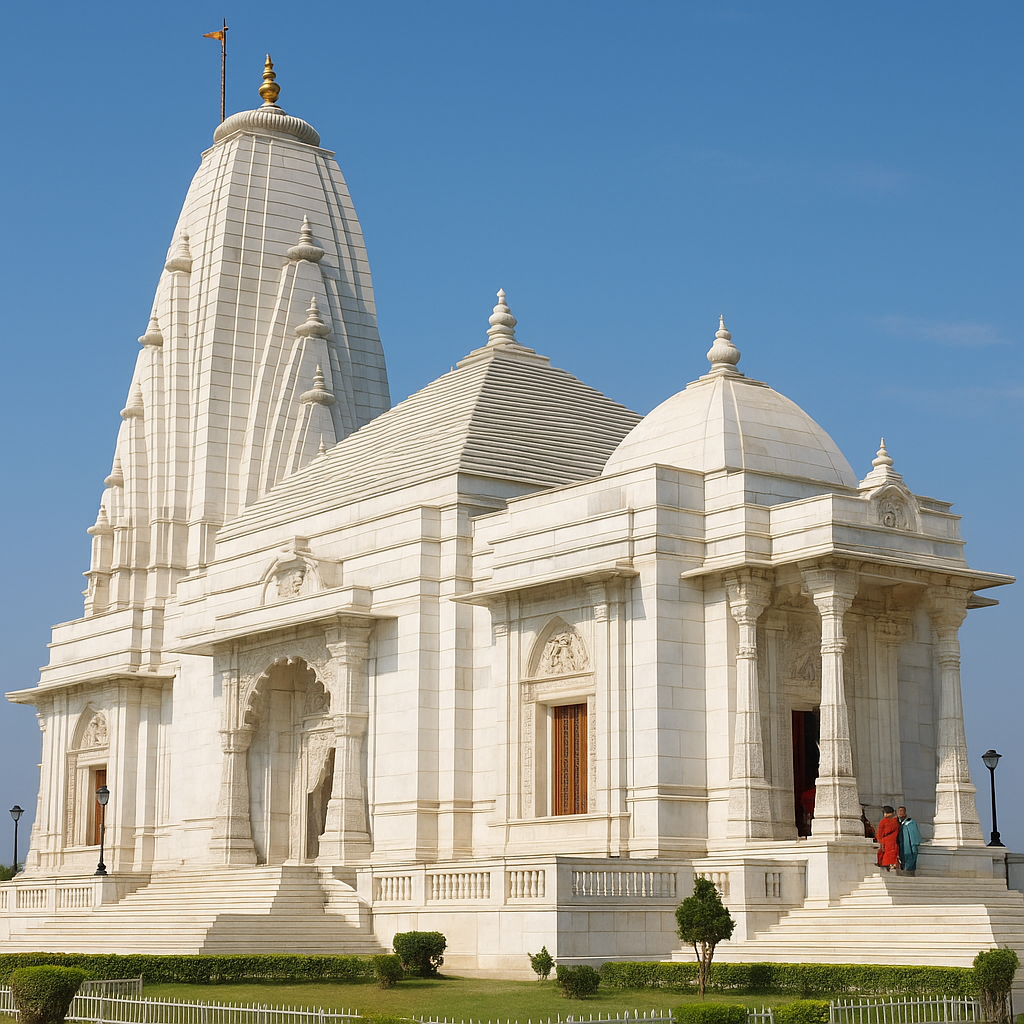
Unlike the centuries-old temples of Rajasthan, Birla Mandir represents a newer tradition of temple construction, blending spiritual devotion with contemporary aesthetics.
Architecture and Design
Composed of pure white marble, the temple shines vividly against Moti Dungri Hill. The three towering domes stand for various modes of religion and depict unity and totality.
When illuminated, the building is one of the most stunning sights Jaipur has to offer.
Carvings and Symbolism
Differing from most ancient temples, the walls of Birla Mandir host not just Hindu gods but also the image of saints, philosophers, and thinkers such as Socrates and Buddha—an unexpected addition that reflects the universal message of the temple.
Spiritual Experience
Committed to Lord Vishnu and Goddess Lakshmi, this is a crucial pilgrimage point for festivals such as Janmashtami and Diwali, when lights are placed all over the temple and devotional songs fill the air.
Although contemporary, it has managed to place itself in the list of most revered Temples of Rajasthan in Rajasthan.
3. Brahma Temple, Pushkar
The Brahma Temple in Pushkar is one of the most iconic and spiritually significant temples of Rajasthan.
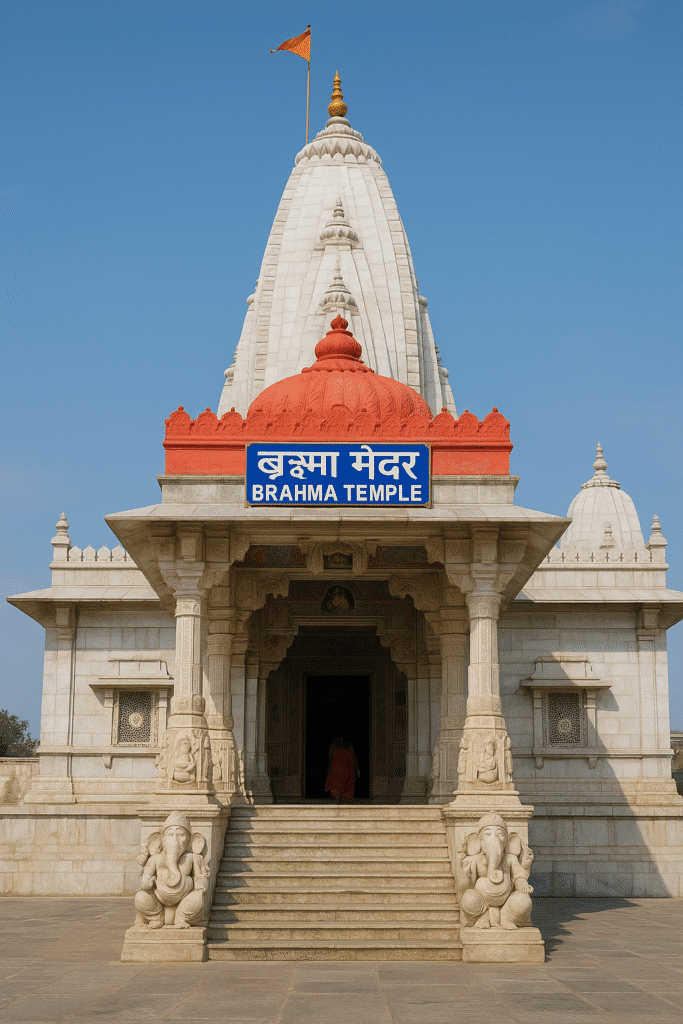
What makes it truly unique is that it is one of the very few temples in the world dedicated to Lord Brahma, the Hindu God of Creation.
Situated on the banks of the sacred Pushkar Lake, this temple is a major pilgrimage site and holds immense religious, historical, and cultural value.
Mythological Background
It is said that Lord Brahma conducted a yajna (sacrifice) here. After his consort Savitri cursed him for marrying Gayatri to fulfill the ritual, she made Brahma unpopular and stated that he would not be worshipped by many.
Hence, the Pushkar temple remains among the very few temples devoted to him, making it a special spiritual milestone.
Architecture and Rituals
The temple is decorated with a vibrant red spire and a sanctum containing Brahma’s four-faced idol representing his all-knowing nature.
The floor of the temple contains silver coins offered by pilgrims, which enhance the sanctity of the temple.
Pilgrimage Importance
Nestled alongside the sacred Pushkar Lake, pilgrims dip in its waters as a precursor to entering the temple.
The Kartik Purnima festival brings Pushkar to life as one of the busiest places of pilgrimage, with thousands of pilgrims and travelers from all over the world flocking there
4. Eklingji Temple, Udaipur
Eklingji Temple, roughly 22 km from Udaipur, is a temple dedicated to Lord Shiva in the avatar of a four-faced black marble image.
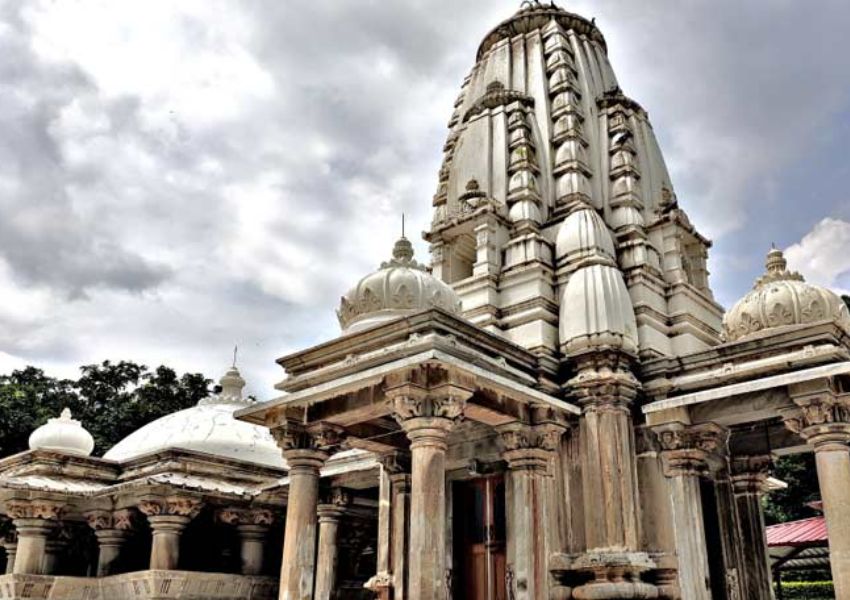
Constructed in the 8th century by Mewar rulers, this temple has been the abode of worship for the royal family for centuries.
Historical Background
The temple was originally built in 734 CE by Bappa Rawal, the founder of the Mewar dynasty, who was a devout follower of Lord Shiva.
Over the centuries, the temple has undergone several renovations, especially during the reign of the Sisodia Rajputs, who considered Eklingji not just their family deity but also the true ruler of Mewar.
The kings of Mewar ruled as the representatives or “Dewans” of Lord Eklingji, symbolizing a unique blend of religion and governance.
Structure and Details
The complex is 108 small sandstone and marble temples. The central shrine has a soaring roof and finely carved pillars.
The Shiva idol here, four-headed, symbolizes his omnipresence and power.
Rituals and Celebrations
On Mondays and Maha Shivaratri, the temple echoes with mantras and lavish rituals. For the faithful, Eklingji is one of the most sacred of Rajasthan’s ancient temples and a foundation among its sacred sites
5. Karni Mata Temple, Deshnok
The Karni Mata Temple in Deshnok, near Bikaner, is one of the most unusual and fascinating temples of Rajasthan.
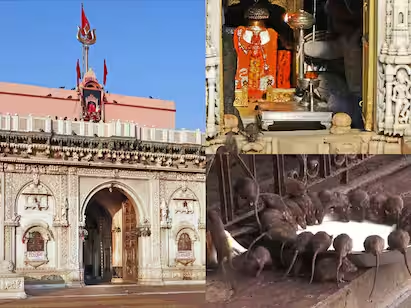
Dedicated to Karni Mata, a revered female sage and incarnation of Goddess Durga, the temple is world-famous as the “Rat Temple” because of the thousands of rats that inhabit and roam freely within the temple complex.
Legends
Karni Mata, a mystic god believed to be an incarnation of Goddess Durga, is said to have gifted her devotees the privilege of being born again as rats.
Therefore, the temple rats are sacred, and seeing a white rat is said to be particularly lucky.
Architecture
The temple, constructed in Mughal architecture, contains silver doors and marble panelings that were gifted by Maharaja Ganga Singh of Bikaner. Apart from its singular inhabitants, the temple has a sense of reverence and devotion.
Pilgrimage Experience
Feeding the rats is a religious act for most pilgrims. The temple is a testament to the extraordinary expressions of faith and ranks among the most interesting pilgrimage destinations in Rajasthan.\
6. Ranakpur Jain Temple
The Ranakpur Jain Temple is one of the most magnificent and artistically renowned ancient temples of Rajasthan.
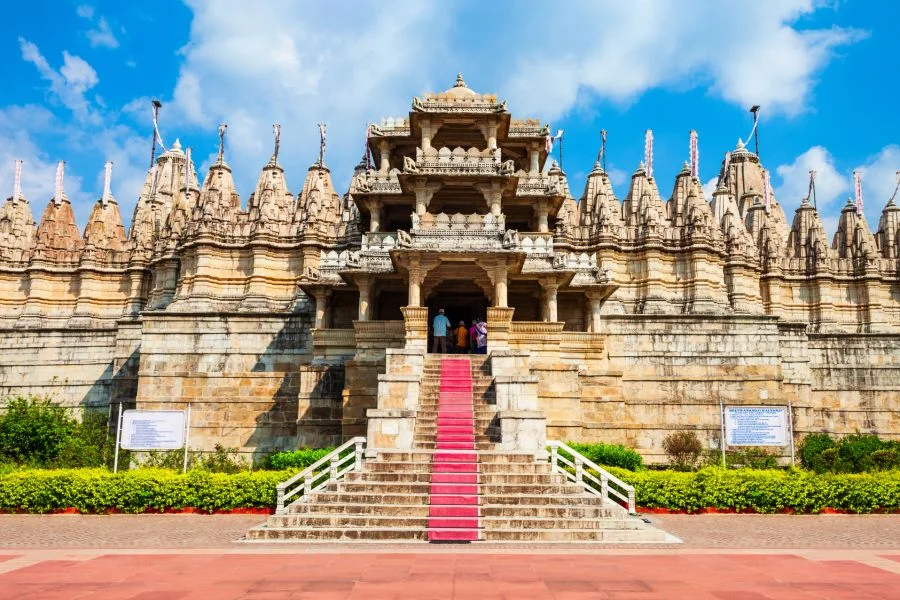
Dedicated to Tirthankara Adinatha, the first Jain Tirthankara, this temple is not only a major pilgrimage site for Jains but also a marvel of medieval Indian architecture, drawing travelers, historians, and art lovers from across the globe.
Historical Context
Constrructed during the 15th century under Rana Kumbha’s patronage, the temple is a shrine to Tirthankara Adinatha.
Architectural Brilliance
Built entirely of marble, pilgrimage sites the temple features 1,444 intricately carved pillars, each separately designed. Its four-faced style represents the all-pervading nature of Tirthankara.
The central dome, carved ceilings, and latticework windows evoke a feeling of divinity and harmony.
Sacred Relevance
Ranakpur is a spiritual as well as architectural gem, sacred to be one of the most revered ancient temples and beloved pilgrim spots for Jains.
7. Mehandipur Balaji Temple
The Mehandipur Balaji Temple, located in the Dausa district of Rajasthan, is one of the most unique and powerful pilgrimage sites in India.
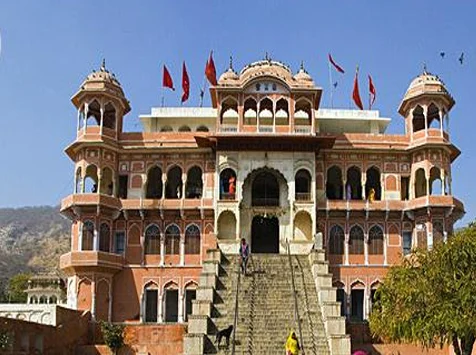
Dedicated to Lord Hanuman, who is worshiped here as Balaji, this temple is renowned not just for its spiritual significance but also for the unusual rituals performed to free devotees from negative energies, evil spirits, and supernatural afflictions.
Mystical Beliefs
It is generally known that Mehandipur Balaji possesses the ability to heal individuals who are possessed by evil spirits or have supernatural ailments.
Exorcisms are usually part of rituals here and hence it is one of the most offbeat spiritual centers.
Pilgrimage Significance
A temple that is not traditional in reputation, yet pilgrims arrive here in droves to ask for blessings and protection.
The temple’s status as a place of miracles makes it a significant point of pilgrimage in the state.
8. Ambika Mata Temple, Jagat
The Ambika Mata Temple, located in Jagat village near Udaipur, is one of the finest examples of early temple architecture in Rajasthan.
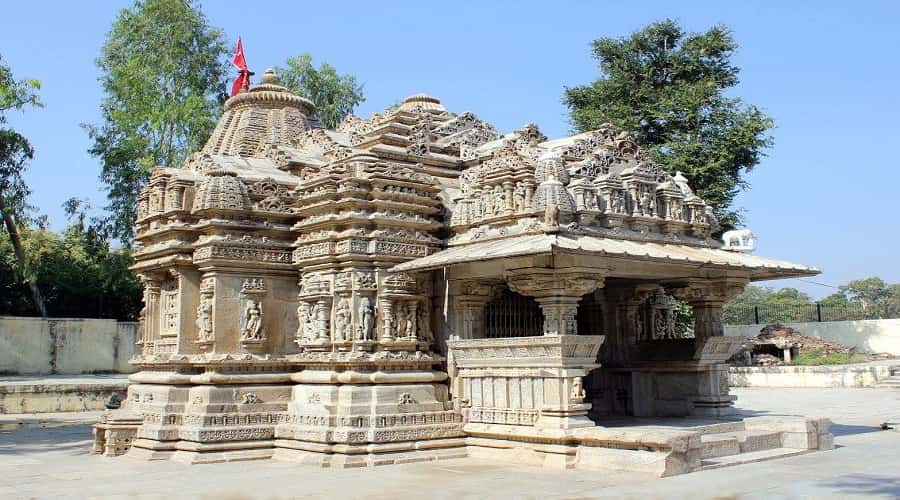
Often called the “Khajuraho of Rajasthan”, this temple is famous for its stunning carvings and intricate stonework that resemble the beauty and style of Khajuraho’s temples in Madhya Pradesh.
Art and Architecture
Constructured in the 10th century, the pilgrimage sites temple walls are decorated with beautiful carvings of gods, celestial bodies, and dancers, looking like the works of art of Khajuraho temples. Its Shikhara (spire) is a work of medieval brilliance.
Spiritual Meaning
The temple showcases feminine divinity and is a significant ancient temple representing the goddess’s protective and caring aspects.
9. Govind Dev Ji Temple, Jaipur
The Govind Dev Ji Temple in Jaipur is one of the most revered and spiritually significant temples of Rajasthan.
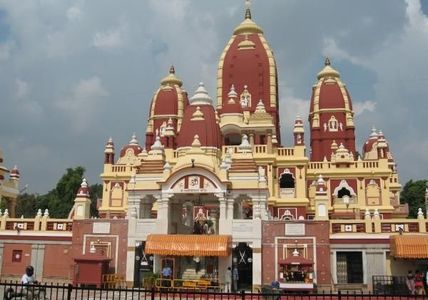
Dedicated to Lord Krishna, the temple is located within the City Palace complex, making it not just a place of worship but also a historical landmark.
It is considered one of the most visited temples of Rajasthan, drawing thousands of devotees daily.
History and Beliefs
The pilgrimage sites image in this temple is said to be Krishna’s form while on earth and was brought here by Raja Sawai Jai Singh II from Vrindavan.
The temple is dedicated to Lord Krishna, worshipped here in his form as Govind Dev Ji. According to tradition, the idol of Govind Dev Ji was originally established in Vrindavan, the birthplace of Krishna’s divine pastimes.
The idol is said to have been crafted by Vajranabh, the great-grandson of Lord Krishna, nearly 5,000 years ago. Legend holds that Vajranabh created three images of Krishna—
Devotional Atmosphere
The temple is one of the most lively pilgrim places, particularly during Janmashtami and Holi when thousands visit the place in order to celebrate with devotion and revelry.
The Cultural and Spiritual Significance of Rajasthan’s Temples
The Temples of Rajasthan in Rajasthan are not just monuments; they are living expressions of faith.
They represent centuries of devotion, art, and community life. Every temple—every Jain, Hindu, and folk-inspired one—is an example of the spiritual diversity of the place.
These old temples are treasure houses of myths and legends, and the pilgrim centers attract millions in search of blessings, healing, and spiritual peace. Together, they embody Rajasthan’s soul: strong, pious, and profoundly aesthetic.
Travel Tips for Visiting Temples in Rajasthan
- Dress modestly to honor temple customs.
- Go during festivities to see rituals at full pomp and circumstance.
- Employ local guides to learn myths and histories.
- Early mornings are ideal for serene darshan.
- Photography can be prohibited within certain temples.
Conclusion
The exploration of the Temples of Rajasthanis not just about visiting religious structures—it is about experiencing centuries of devotion carved into stone, preserved in rituals, and celebrated in festivals.
Each temple tells a story: of kings who built them as acts of piety, of saints who preached from their steps, and of communities who continue to sustain their traditions.
The ancient temples in Temples of Rajasthan such as Dilwara and Ranakpur stand as timeless examples of how devotion inspired unmatched craftsmanship.
Their intricate carvings and architectural perfection reveal how art and faith intertwined to create beauty that transcends generations.
On the other hand,Temples of Rajasthan like Mehandipur Balaji and Karni Mata highlight the diversity of spiritual practices, where belief takes forms beyond the conventional—manifesting in healing rituals, legends, and the extraordinary reverence for animals like rats.
Equally significant are the pilgrimage sites such as Pushkar’s Brahma Temple and Udaipur’s Eklingji, which continue to attract millions of devotees each year.
For the faithful, these journeys are not mere travels but sacred acts of connection—moments when the earthly meets the divine.
Culturally, Temples of Rajasthan embody the spirit of inclusivity. The Birla Mandir of Jaipur, for example, merges modern architecture with age-old devotion while also honoring thinkers from different philosophies.
This reflects Rajasthan’s openness to wisdom beyond boundaries, making its temples not only Hindu or Jain sanctuaries but also universal centers of spiritual thought.
For travelers, the temples are gateways into Rajasthan’s layered identity. They reveal how spirituality shaped its cities, guided its rulers, and bound its people.
Visiting these temples means stepping into living museums where mythology, faith, and art exist together.
Whether you stand beneath the glowing spires of Birla Mandir, witness the miracles of Mehandipur Balaji, or soak in the quiet divinity of Ambika Mata, you engage with Rajasthan’s soul.
Ultimately, the Temples of Rajasthan symbolize more than religion. They represent resilience—surviving invasions, time, and change.
They represent continuity—where centuries-old rituals are still performed with the same reverence today.
And they represent beauty—where stone is transformed into a sacred expression of devotion.
To walk through these temples is to walk through history, legend, and spirituality all at once.
They are not simply destinations but experiences—reminders that Rajasthan is not just the land of kings, but also the land of gods, saints, and seekers.

Pingback: Ranakpur Jain Temple: 7 Fascinating Facts on History & Architecture Marvel - Padharodesh
Pingback: Eklingji Temple: 7 Stunning Insights into History & Temple Architecture - Padharodesh